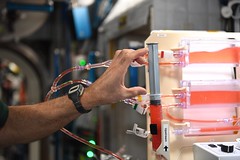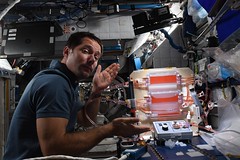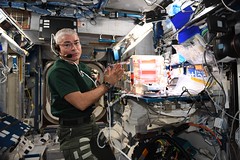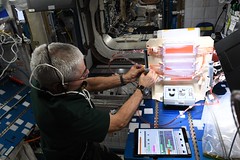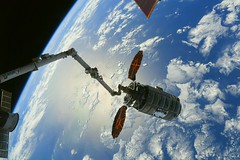Plant fluid
jeudi 1 juillet 2021 à 11:16Thomas Pesquet posted a photo:
Plant Water Management - nom de code : PWM. C’est une nouvelle façon d’utiliser l'hydroponie pour faire pousser des plantes dans l’espace, avec le très pédagogue Marc et moi-même – qui apparemment manquais de sommeil [emoji blague]. Cette technique n’utilise pas de terre ; il faut donc apporter à la plante les sels minéraux, les éléments essentiels à sa croissance et une bonne aération pour que la plante germe et se développe correctement. On utilise pour ça le phénomène de capillarité, qui fonctionne encore mieux en impesanteur que sur Terre. Pour s’en assurer, les chercheurs comparent avec des expériences similaires dans leurs laboratoires. À terme, ces systèmes nous aideront à faire pousser nos aliments pour des voyages spatiaux au long cours.
PWM stands for Plant Water Management. A novel way to use hydroponics to grow plants in space – no earth (lower case :wink:) required! As demonstrated here by Mark (who has great pedagogical skills), and me (who was not very awake apparently :stuck_out_tongue_winking_eye:). Growing plants and food in space is important as fresh food has the most vitamins and is healthiest. We have made great progress growing crops in weightlessness where nothing is easy. How do you get food into the plant roots in an environment where their is no soil, no rain and even if there was it would float all around! Hydroponics is the answer in this experiment where everything a plant needs is "injected" straight to the roots, the red fluids you can see. Researchers compare results with control studies on Earth to prepare for longer voyages farther into our Solar System. www.nasa.gov/feature/glenn/2021/project-examines-how-to-w...
Credits: ESA/NASA
527C3654
